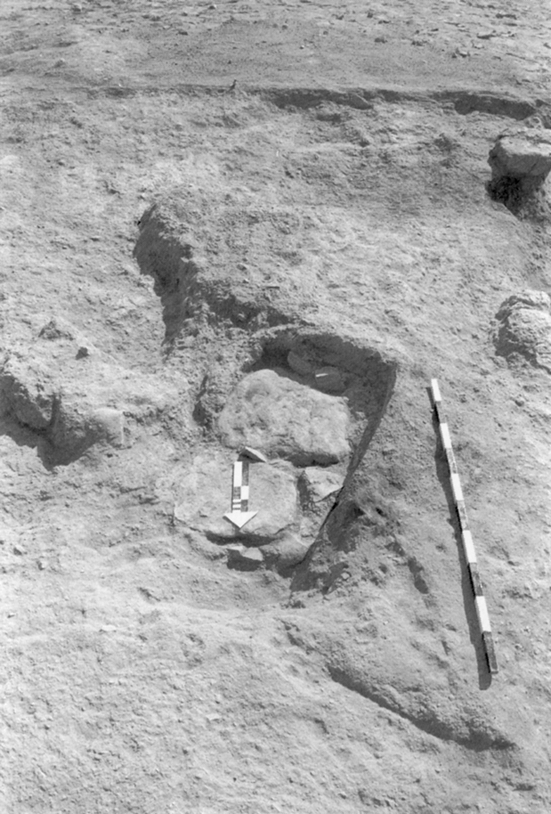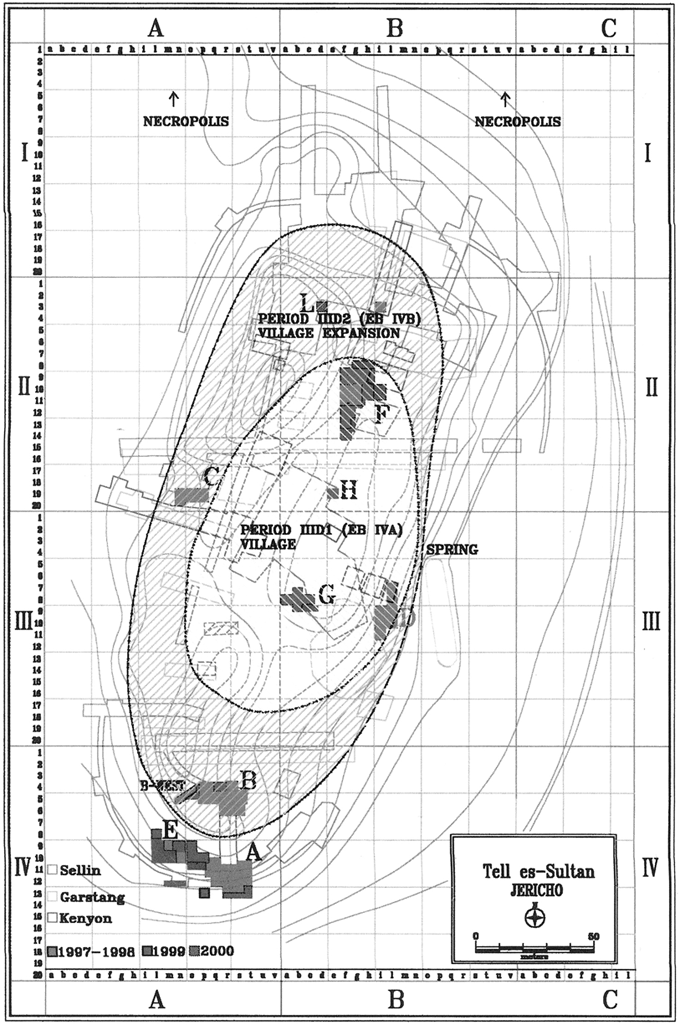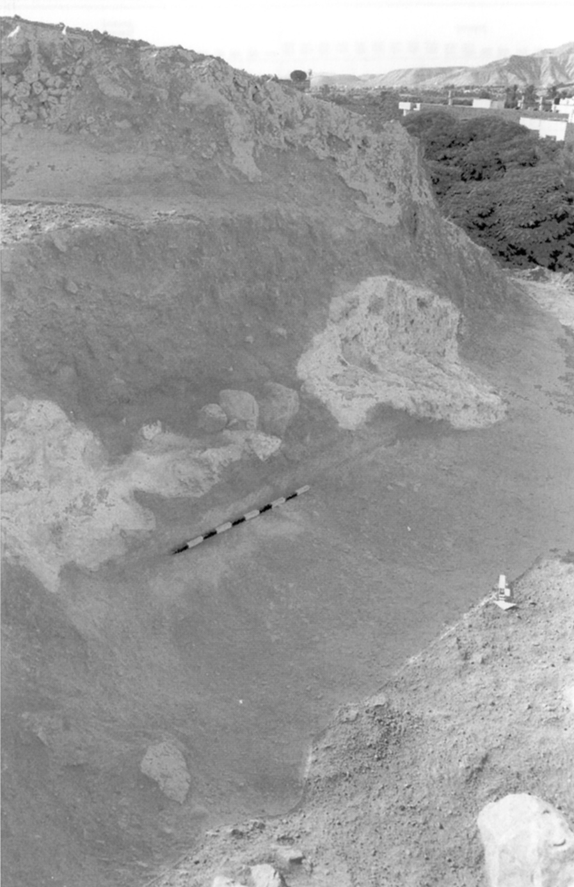5. Sultan IIId - Early Bronze IV (2300-2000
BC)



 Early Bronze IV marks a distinct change in the
life of Tell es-Sultan, which was first deserted for a certain
while, and then reoccupied by a new rural community. This pattern of
development of the site, which has been reconstructed re-evaluating
finds of the Austro-German and British Expeditions,
in the light of the Italian-Palestinian updated
stratigraphy, has
been fruitful compared with that of the huge necropolis excavated by
K.M. Kenyon, establishing an early phase (Sultan IIId1), when, after
a certain gap in occupation, sparse dwellings occupied the summit of
the Spring Hill, and a second phase (Sultan IIId2), when the
settlement became a huge rural village, and also the slopes of the
tell were inhabited after having been appropriately terraced.
The Italian-Palestinian Expedition identified
remains of Period IIId
on top of the Spring Hill,
and in the northern plateau of the tell; namely, dwellings,
including ovens, silos, floors, and flimsy mud-brick walls, often
made of reemployed bricks from Period IIIc2 collapsed structures.
Early Bronze IV marks a distinct change in the
life of Tell es-Sultan, which was first deserted for a certain
while, and then reoccupied by a new rural community. This pattern of
development of the site, which has been reconstructed re-evaluating
finds of the Austro-German and British Expeditions,
in the light of the Italian-Palestinian updated
stratigraphy, has
been fruitful compared with that of the huge necropolis excavated by
K.M. Kenyon, establishing an early phase (Sultan IIId1), when, after
a certain gap in occupation, sparse dwellings occupied the summit of
the Spring Hill, and a second phase (Sultan IIId2), when the
settlement became a huge rural village, and also the slopes of the
tell were inhabited after having been appropriately terraced.
The Italian-Palestinian Expedition identified
remains of Period IIId
on top of the Spring Hill,
and in the northern plateau of the tell; namely, dwellings,
including ovens, silos, floors, and flimsy mud-brick walls, often
made of reemployed bricks from Period IIIc2 collapsed structures.



 Early Bronze IV marks a distinct change in the
life of Tell es-Sultan, which was first deserted for a certain
while, and then reoccupied by a new rural community. This pattern of
development of the site, which has been reconstructed re-evaluating
finds of the Austro-German and British Expeditions[34],
in the light of the Italian-Palestinian updated
stratigraphy, has
been fruitful compared with that of the huge necropolis excavated by
K.M. Kenyon, establishing an early phase (Sultan IIId1), when, after
a certain gap in occupation, sparse dwellings occupied the summit of
the Spring Hill, and a second phase (Sultan IIId2), when the
settlement became a huge rural village, and also the slopes of the
tell were inhabited after having been appropriately terraced[35].
The Italian-Palestinian Expedition identified
remains of Period IIId
on top of the Spring Hill[36],
and in the northern plateau of the tell; namely, dwellings,
including ovens, silos, floors, and flimsy mud-brick walls, often
made of reemployed bricks from Period IIIc2 collapsed structures.
Early Bronze IV marks a distinct change in the
life of Tell es-Sultan, which was first deserted for a certain
while, and then reoccupied by a new rural community. This pattern of
development of the site, which has been reconstructed re-evaluating
finds of the Austro-German and British Expeditions[34],
in the light of the Italian-Palestinian updated
stratigraphy, has
been fruitful compared with that of the huge necropolis excavated by
K.M. Kenyon, establishing an early phase (Sultan IIId1), when, after
a certain gap in occupation, sparse dwellings occupied the summit of
the Spring Hill, and a second phase (Sultan IIId2), when the
settlement became a huge rural village, and also the slopes of the
tell were inhabited after having been appropriately terraced[35].
The Italian-Palestinian Expedition identified
remains of Period IIId
on top of the Spring Hill[36],
and in the northern plateau of the tell; namely, dwellings,
including ovens, silos, floors, and flimsy mud-brick walls, often
made of reemployed bricks from Period IIIc2 collapsed structures.